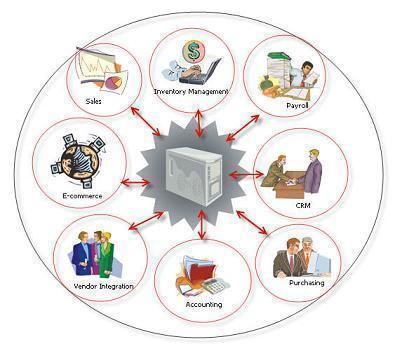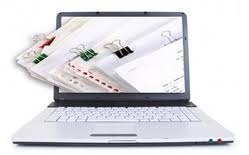Enterprise Resource Planning or ERP is actually a process or approach that attempts to consolidate all of a company’s departments and functions into a single computer system that services each department’s specific needs. It is, in a sense, a convergence of people, hardware, and software into an efficient production, service, and delivery system that creates profit for the company.
While the idea is easy to grasp in theory, the reality has been different. Most companies have a conglomeration of different systems and procedures (as well as hardware and software) designed specifically for their own needs. The Human Resources Department holds employee records (including payroll, medical, and other benefits). The Finance Department holds Financial data and processing, which includes payroll computations and employee compensation as well as invoicing and billing for company products and services. Manufacturing holds production data, Warehousing holds Inventories, Customer Relations holds customer orders, and so on.
ERP’s dream is to have a single software solution integrating the different functions and activities into a seamless whole where information needed for decision-making is shared across departments, and the action that one department takes results in the appropriate follow-up action up and down the line.
The most often cited example of an ERP software is customer ordering and delivery where a customer’s order moves smoothly from Sales, where the ‘deal’ is consummated, to Inventory and Warehousing, which retrieves and packages the order for delivery, to Finance, where invoicing, billing, and payments are handled, and on to Manufacturing, where purchased product replacement is done.
Primary Benefit
Prior to ERP, each department could be considered an independent fiefdom. Once a department’s particular function is completed, it no longer cares what happens afterwards. A customer following up with Sales for his product will be told, “Check with Warehouse,” who will then say, “Check with Delivery,” who can tell the customer, “Please check with Finance to see if your invoice has been cleared.”
Efforts to integrate the system before always met with the stumbling block of different software and procedures. A sales person could not access the finance database to find out the customer’s billing status, nor could he/she easily access the warehouse, inventory, or delivery to find out the status of the customer’s order.
With ERP, all who need information can easily access all elements in the supply and production chain. This leads to efficiency in customer management and perceived company effectiveness in delivering on customer expectations.
Other Advantages
An often overlooked advantage in having a workable and efficient ERP system in place is savings in relation to energy consumption and data management.
Having an ERP system in place implies having a single hardware system to handle the different requirements, translating into reduced power consumption operating off a single database that translates into savings on storage.
The savings generated from a minimum of hardware and storage, coupled with operational efficiencies created from a single system across all departments, translates into measurable profit for the company.




Sarvesh
Great Explanation!